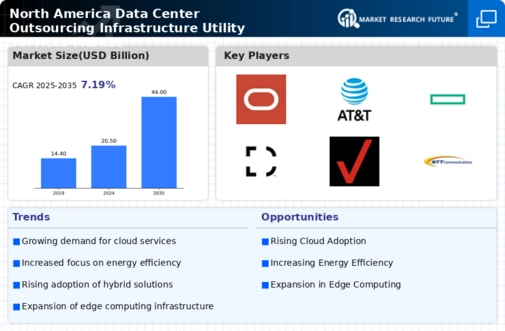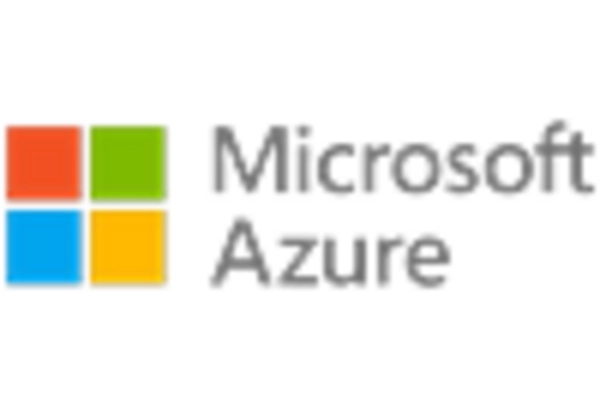Rising Demand for Scalability
The data center-outsourcing-infrastructure-utility-services market in North America experiences a notable increase in demand for scalable solutions. As businesses expand, they require flexible infrastructure that can grow with their needs. This trend is particularly evident among small to medium-sized enterprises (SMEs) that seek to optimize costs while ensuring they can scale operations efficiently. According to recent data, the market is projected to grow at a CAGR of 10.5% over the next five years, driven by the necessity for adaptable resources. Companies are increasingly outsourcing their data center needs to leverage the expertise of specialized providers, allowing them to focus on core business functions while ensuring that their infrastructure can accommodate future growth. This shift towards scalability is reshaping the competitive landscape of the industry.
Cost Optimization and Resource Management
Cost optimization remains a pivotal driver in the data center-outsourcing-infrastructure-utility-services market in North America. Organizations are increasingly seeking ways to reduce operational expenses while maximizing resource utilization. Outsourcing data center functions allows businesses to convert fixed costs into variable costs, enabling them to allocate resources more efficiently. This trend is particularly pronounced among enterprises looking to streamline their IT budgets. Recent studies suggest that companies can achieve up to 30% savings by outsourcing their data center operations. As a result, the market is likely to see continued growth as businesses prioritize cost-effective solutions that do not compromise on performance or reliability.
Regulatory Compliance and Data Sovereignty
The data center-outsourcing-infrastructure-utility-services market in North America is significantly influenced by regulatory compliance and data sovereignty concerns. Organizations are compelled to adhere to stringent regulations regarding data protection and privacy, such as the California Consumer Privacy Act (CCPA) and the Health Insurance Portability and Accountability Act (HIPAA). These regulations necessitate that businesses ensure their data is stored and processed in compliance with local laws. Consequently, many companies are outsourcing their data center operations to specialized providers who possess the necessary expertise to navigate these complex regulatory landscapes. This trend is expected to drive market growth, as organizations prioritize compliance and seek to mitigate risks associated with data breaches and non-compliance penalties.
Technological Advancements in Infrastructure
Technological innovations play a crucial role in shaping the data center-outsourcing-infrastructure-utility-services market in North America. The integration of advanced technologies such as artificial intelligence (AI), machine learning, and automation is enhancing operational efficiency and reducing costs. For instance, AI-driven analytics can optimize resource allocation, leading to improved performance and reduced downtime. The market is witnessing a surge in investments in these technologies, with spending expected to reach $50 billion by 2026. This influx of capital is likely to drive the development of more sophisticated data center solutions, enabling providers to offer enhanced services. As a result, businesses are increasingly turning to outsourcing as a means to access cutting-edge infrastructure without the burden of in-house management.
Increased Focus on Disaster Recovery Solutions
The data center-outsourcing-infrastructure-utility-services market in North America is witnessing a heightened emphasis on disaster recovery solutions. As businesses become increasingly reliant on digital infrastructure, the potential impact of data loss or downtime has become a critical concern. Organizations are recognizing the importance of robust disaster recovery plans to ensure business continuity in the face of unforeseen events. This has led to a surge in demand for outsourcing services that provide comprehensive disaster recovery solutions. Market analysts indicate that the disaster recovery services segment is expected to grow by 15% annually, reflecting the urgent need for businesses to safeguard their data and maintain operational resilience. Consequently, outsourcing providers are adapting their offerings to meet this growing demand.


















Leave a Comment